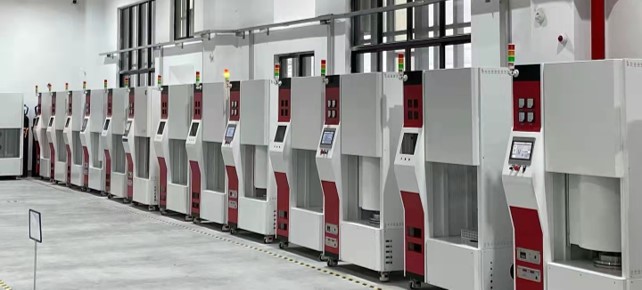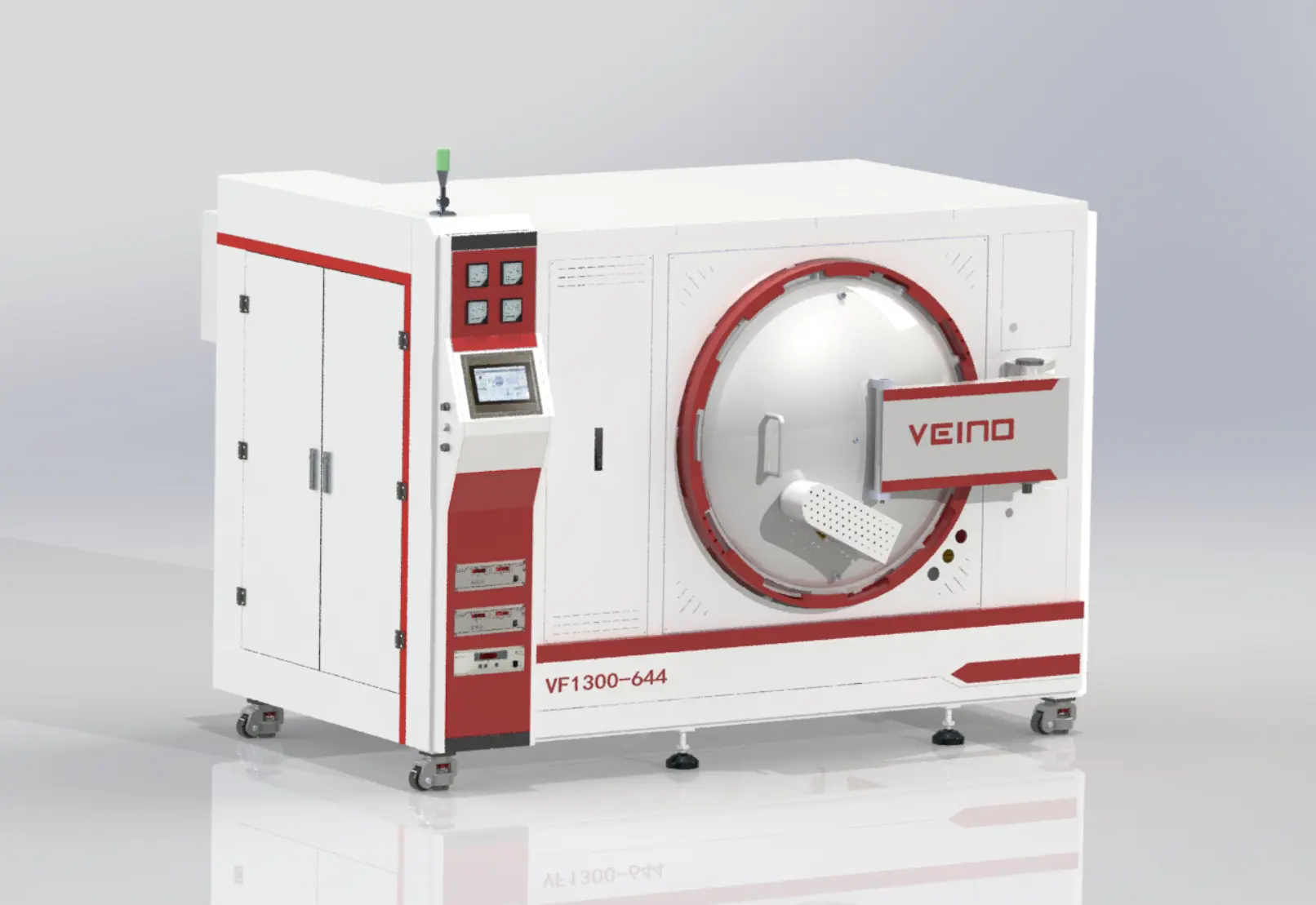Vacuum Furnace Process Flow Step-by-Step Heat Treatment Guide
The use of vacuum furnaces as the solution of choice shows up in industries where precision, cleanliness, and control of heat are not options. Vacuum furnaces are utilized in aerospace and automotive and medical industries and tool manufacturing processes that involve high-temperature heat treatment of materials being brazed, sintered, annealed and hardened-all completely free of contamination.
But what is actually the starting and finish process of a vacuum furnace?
In this paper, we shall discuss the step wise flow of the vacuum furnace process. You are new to the technology and want to learn more before making a serious investment or have a good basic knowledge of the technology, but you want to get into the details of how it works, this guide will take you through all the stages of operating it.
What Is a Vacuum Furnace?
A heat treatment chamber that runs under a controlled atmosphere suitable for vacuum or inert gas is called a vacuum furnace. The main objective is to destroy oxidation and pollution in high temperature processes. Unlike normal furnaces, vacuum furnaces enable metals to be treated on surfaces without serious compromises and therefore these furnaces are very useful in their application in critical matters.
Common Uses:
- Vacuum brazing
- Sintering of powder metals
- Annealing and stress relief
- Solution treatment
- Degassing and purification
Overview of Vacuum Furnace Process Flow
The process flow in a vacuum furnace can be summarized into the following steps:
- Loading
- Vacuum Pump Down
- Heating
- Soaking (Holding)
- Cooling (Quenching)
- Unloading
- Post-Process Inspection
Let’s explore each of these steps in detail.
1. Loading the Furnace
It starts with loading of workpieces into a hot zone of the furnace. The items normally find their ways on the fixtures, trays or hearths that do not deform easily when exposed to high temperatures.
Key Considerations:
- Material Compatibility: Stainless steel, titanium, copper, and tool steels are commonly treated in vacuum furnaces.
- Load Uniformity: Even spacing ensures consistent heating.
- Weight Distribution: Prevents thermal distortion during treatment.
In industrial settings, automated loading systems may be used for heavy or high-volume components.
2. Vacuum Pump Down
After the load is clamped, the furnace hermetically closed, and vacuum pumping process started. This aims at eliminating any atmospheric gases, in particular oxygen and moisture to avoid oxidation when subjected to heating.
Typical Pumping Stages:
- Rough Vacuum: Achieved using rotary vane or scroll pumps (down to 10⁻² mbar)
- High Vacuum: Achieved using diffusion or turbomolecular pumps (up to 10⁻⁵ to 10⁻⁶ mbar)
Why This Step Matters:
- Removes reactive gases like oxygen, nitrogen, and hydrogen.
- Enables clean metal surfaces post-treatment.
- Essential for processes like vacuum brazing, where flux is not used.
At Normantherm, our vacuum systems are engineered for rapid pump-down and stable pressure maintenance, ensuring process reliability.
3. Heating
When vacuum is applied into the chamber, the internal temperature is started rising by electric resistance heaters. Heating in this case would be done in several zones to achieve improved temperature uniformity.
Heating Parameters:
- Ramp Rate: Controlled speed of temperature increase (e.g., 5°C/min)
- Target Temperature: Varies by process, often between 600°C and 1300°C
- Hot Zone Materials: Graphite, molybdenum, or tungsten depending on application
Normantherm furnaces are equipped with PID-controlled heating systems that maintain consistent temperatures with minimal deviation (±5°C or better).
4. Soaking or Holding
The furnace will then be in the soaking or dwelling phase when the required temperature has been achieved. In this process, the temperature is maintained at a constant value to enable full diffusion, change in phase (bonding in brazing).
Duration:
- Varies from 30 minutes to several hours depending on the part size and material.
Why It’s Important:
- Ensures full material transformation.
- Promotes uniform mechanical and structural properties.
- Enables strong metallurgical bonds in brazing or sintering processes.
A stable soak period is critical for eliminating internal stresses and achieving target hardness, conductivity, or microstructure.
5. Cooling (Quenching)
After soaking, the furnace must cool down. Depending on the process and material, this is done using either vacuum cooling or gas quenching.
Cooling Methods:
➤ Natural Vacuum Cooling:
- Slower process
- Suitable for processes where controlled cooling is needed
- Avoids thermal shock
➤ Gas Quenching:
- Uses inert gases like nitrogen, argon, or helium
- Pressurized cooling (up to 10 bar)
- Rapid cooling for applications like vacuum hardening
At Normantherm, our furnaces come with high-efficiency cooling systems, including heat exchangers and multi-directional gas flow for consistent quenching.
6. Unloading the Furnace
When the load reaches a safe handling temperature (usually below 60° C), the furnace door is opened and the parts removed. As part of a production process this step can be accelerated via the use of automated systems.
Before unloading:
- The furnace may be backfilled with inert gas to bring pressure back to atmospheric levels.
- Operators wear heat-resistant gloves and safety gear to avoid injuries.
Unloading must be done carefully to avoid introducing contaminants or causing thermal stress to the finished parts.
7. Post-Process Inspection
After removal, each part undergoes visual, mechanical, or microscopic inspection to ensure the heat treatment process has met quality standards.
Inspection Methods:
- Hardness testing
- Dimensional inspection
- Metallographic analysis
- Leak testing (for brazed parts)
Parts processed in a vacuum furnace often come out with a bright, oxide-free surface finish, reducing or eliminating the need for further cleaning.
Advantages of the Vacuum Furnace Process
Here’s why the vacuum furnace process flow is ideal for high-spec applications:
Feature | Benefit |
| Vacuum Environment | No oxidation, scaling, or decarburization |
| Inert Gas Compatibility | Clean and controlled atmosphere |
| Temperature Uniformity | Consistent results batch after batch |
| Repeatability | Automated programs and recipe storage |
| Clean Surface Finish | Eliminates the need for post-cleaning |
| Energy Efficiency | Insulated chamber reduces heat loss |
| Versatile Applications | Brazing, sintering, hardening, annealing, and more |
Applications That Depend on Vacuum Furnace Processing
The vacuum furnace process flow outlined above supports critical operations in sectors such as:
- Aerospace: For heat treatment of turbine blades, fasteners, and structural components
- Tool & Die Making: Vacuum hardening and tempering of high-speed steel
- Medical: Clean heat treatment of surgical tools and implants
- Electronics: Annealing and diffusion for semiconductor components
- Automotive: Brazing of exhaust systems, turbochargers, and sensors
At Normantherm, our clients rely on consistent, repeatable results enabled by our high-precision vacuum furnace systems.
Final Thoughts
The vacuum furnace process flow which involves loading, inspection etc is a well-engineered process that ensures the finest quality of thermal processing is achieved. Each level plays an important role towards the realization of performance, safety and reliability mandated by industries in modernity.
Knowledge of every single process makes operators and buyers make more informed decisions related to equipment, process control and the planning of production.
At Normantherm we manufacture vacuum furnaces, which are compact, have the highest degree of accuracy and durability and are value added-guaranteed by technical expertise and a complete cycle support.
📞 Want to learn more or schedule a product consultation? Visit www.normantherm.com or contact us directly to discuss your heat treatment needs.
You may also like

The Future of 3D Printing in Heat Treatment: How Normantherm is Leading the Way.

Vacuum Brazing Technology: The Key to Stronger and More Durable Joints.

